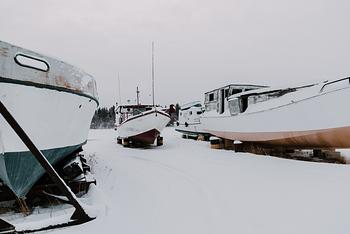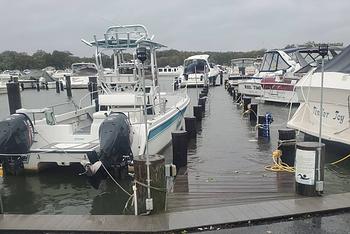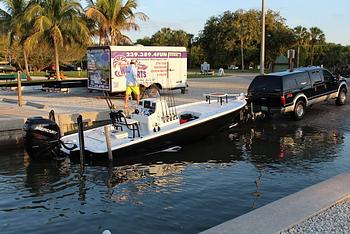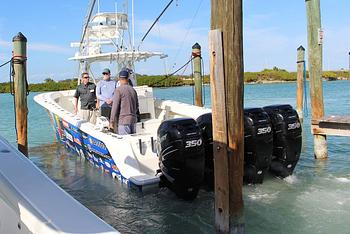There is nothing more peaceful than leisurely tootling along the canals and inland waterways of Europe, the bucolic fields and chocolate box villages passing slowly by. It is a completely different experience to being on the open sea, and one of the main reasons is the presence of locks, tunnels, aqueducts and bridges. These incredible feats of engineering are one of the highlights of canal boat holidays, yet they come with their own set of challenges. Here we take a look at how to navigate them safely and expertly.
1. LOCKS
Locks are a regular and much-loved feature along canals, playing the crucial role of balancing out gradients in the natural landscape. Water can’t travel uphill, so locks – which date back to the Middle Ages in Europe – allow canal traffic to gently rise and fall.
Navigating locks is one of the most charming parts of canal boating, the camaraderie of meeting other boaters, the sense of achievement – it needs some muscle power - and the slow pace adding to the delights of cruising inland waterways. Yet with hundreds of gallons of water gushing through narrow sluice gates, there are some inherent hazards to operating locks, and it is imperative to know how to avoid them.
Safety Considerations when Operating Locks
Take Your Time. Embrace the slow rhythm of the canal and don’t rush making your way through a lock. You’ll want to allow for a minimum of 20 minutes to get through, giving you plenty of time to keep an eye out for problems and to operate the heavy machinery safely. Ensure you enter and leave the lock slowly to avoid damage to both your boat and the lock.
Get Prepared. Life jackets are highly recommended for everyone operating a lock. Ensure sturdy, non-slip footwear is worn, and avoid flip-flops or open-toed shoes, and keep glasses, long hair and clothing tucked in to avoid them getting caught in the windlass.
Signal to Your Crew. With all that water gushing through the sluice gates it can be difficult to hear verbal commands, so work out hand signals in advance to communicate effectively with your crew. It is essential that one person stays on the boat the entire time you are in the lock, with the boat’s engine running.
Keep Away from the Cill. When heading downhill, the main hazard you will encounter is the cill. This solid platform can extend up to five feet and is hidden below the water line when the lock is full. Getting hung up on the cill can capsize and sink a canal boat so ensure you keep well ahead of it. Use your engine and follow the clearly marked signs to make sure you stay well aft of the cill and the gates. If your rudder does accidentally get caught on the cill, close the bottom paddles and open the top paddles to refill the lock.
Be Aware of Other Boaters. There is a certain etiquette to canal boating, and much of it stems from a safety perspective. While it’s a friendly gesture to help another boater open or close the lock gates, be sure to ask first as they might not be prepared. Lock sharing is good etiquette so if you can see a boat approaching be patient and wait for them to join you. Once in the lock together, ensure you keep a safe distance between the boats and use ropes around the bollards to stop them knocking into each other.
2. TUNNELS AND AQUEDUCTS
When it comes to big hills, no amount of locks are going to be enough and it’s time to travel straight through by way of a tunnel. They are an exciting part of cruising the inland waterways of Europe, with some measuring as much as 2,500 metres long. Some tunnels will be wide enough for two boats to pass each other, while other tunnels will operate a one way system. Aqueducts, the beautiful watery bridges which dot the countryside, are narrow and only allow one boat to pass through. Plan your route before starting your day, and be aware of any tunnels or aqueducts you may have to pass through.
Safety Considerations when Navigating Tunnels and Aqueducts
Keep Everyone on Board Safe. Life jackets are highly recommended, especially if you’re on board by yourself, and it’s a good idea to wear waterproofs for comfort – tunnels can be damp and chilly. Instruct all your passengers not to dangle their legs or arms over the side of the boat, and dish out some torches just in case. When crossing aqueducts without safety barriers, all passengers must be safely inside the boat to avoid falling off.
Make Your Boat Visible. Tunnels are not illuminated so you’ll need to make sure you can see where you’re going and that other boats can see you approaching. Put the boat headlight on and turn on interior lights to help navigate. If your pilot light runs on gas then it’s fine to use it, but otherwise switch off any gas heaters and cookers, and ask all those on board not to smoke.
Wait Your Turn. If you’re entering a one way tunnel or aqueduct, make sure there’s no boat inside long before you enter the mouth. In the case of tunnels, give one long blast of your horn, and wait for the reply. If a boat signals back that they are in the tunnel then wait your turn and keep well away of the entrance.
Take it Easy. When it’s your turn to navigate the tunnel or aqueduct enter at a gentle speed, using one wall of a tunnel to guide you in maintaining your position. Try to move the tiller as little as possible, and resist the common urge to counter the sense of being pulled to the side - use fenders if it makes you feel more comfortable. Be aware that tunnels are rarely straight, so if you are following another boat into the tunnel ensure you keep at least two minutes or 160 metres away from the boat in front as you might not always be able to see it. If you are in a two-way tunnel, keep to the right at all times.
3. BRIDGES
Bridges are more common than any other canal and river infrastructure, and you’ll pass under many along your journeys. Most are solid structures of fixed height, so be sure to check your route and ensure that your boat can pass under them before setting off - you wouldn’t be the first boater to get stuck. It’s also important to keep in mind that the water level can vary considerably after heavy rains. Just because you passed under it once, doesn’t mean you can every time.
Safety Considerations when Navigating Bridges
Understand the Different Types of Bridges. Aside from fixed bridges, you might encounter swing and lift bridges along the way - both manual and mechanised. Electric bridges with flashing lights to stop road traffic are fairly straightforward, however for most lift and swing bridges you will need to drop off a crew member to go ahead and open them manually.
Ensure Everyone on Board is Safe. All passengers must remain within the profile of the boat and not stand on the roof as you pass under a bridge. And slippery surfaces can be hazardous when pushing swing bridges, so life jackets and non-slip shoes are a must.
Understand the Right of Way. Boats travelling downstream have right of way, and because the river tends to speed up as it enters the narrower bridge, it’s important to give them plenty of room as they navigate it. Be sure to wait your turn, and don’t try taking your boat through until the bridge is fully open and secure. Stick to the central, the highest part of the bridge channel as you pass under to give more headroom and avoid scraping the sides of the bridge.
Be Aware of Road Traffic and Pedestrians. Well before a swing or lift bridge, land your crew with a windlass and wait at a distance for them to open it. They will need to ensure the road is clear and close the warning barriers (not forgetting to re-open them after you have passed through the bridge is back in place). Ensure no-one is standing on the bridge when it is opened or closed.
Go Easy. Avoid being too vigorous when opening a bridge as it may bounce back against the barrier and cause injury or damage. If it’s too stiff, get some help. Check beforehand that nothing is hanging down that could get trapped, such as chains or ropes, and in the case of manual lift bridges, ensure an adult sits on the arm to keep it raised until the boat has passed all the way through.
Exploring Europe by canal boat or riverboat is one of the most picturesque ways to see the rolling countryside of the continent. Spacious and comfortable, these types of boats embrace the slow pace of life, have plenty of amenities and home comforts and are extremely affordable. Whether you are thinking of selling/buying a canal boat, or want to test the waters and charter a riverboat, Rightboat.com has a huge selection of vessels for sale or yachts for charter from top brokers.
You May Also Like ...
2. 8 Best River Journeys in the USA
3. 3 Best and Top Winter Cruising Destinations
5. Buying and Caring for a Wooden Boat




